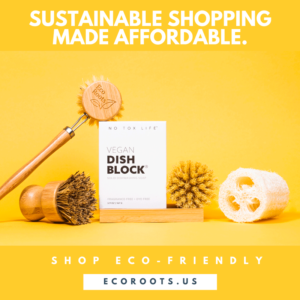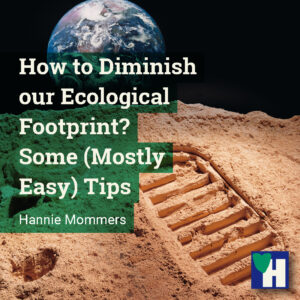
An individual’s ecological footprint tells how much space he or she needs to live. We are not talking about how big your home is here, but how your lifestyle impacts the environment and how we can diminish our ecological footprint.
Ecological footprints are also referred to as CO2 footprints. Are you an emission-intensive person or do you live frugally?
You cause less environmental damage with a smaller footprint. It has been shown in a number of studies that if everyone had an average footprint of 1.8 hectares, nature could restore itself.
I was amazed that despite my rather frugal way of living, the result in the Dutch calculator was 128%. In the UK footprint calculator, it was slightly above the desired average. So there are differences in the way they calculate. But still, there is room for improvement.
Some of the links are affiliate links. As an affiliate associate, we earn a commission when you purchase any of the products offered through the shared links at no extra cost for you. This helps us maintain this website.
Table of contents
How to diminish our ecological footprint?
It is nonsense to think that all change has to come from corporations or governments. Most of us have a footprint that is larger than 1.8 hectares, so we can make many improvements in our behavior and our environment.
Housing
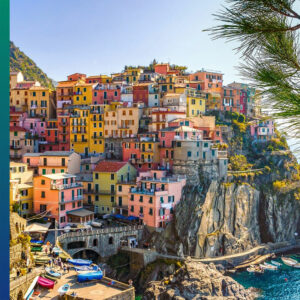
Home
It goes without saying, there is a difference between whether you live in a flat or a detached house. How many square meters does your living space cover? And how many people do you live with? How big is the garden?
A housing crisis has arisen in the Netherlands, to which someone commented with “There are not too few chairs, we just got bigger butts”. In other words, people take up more living space per person than before.
Children leave home earlier and want independent living space. Even when they study. In the past, a room in a student house was sufficient.
Although not realistic in most cases: move to a smaller house if you want to use less CO2. Sharing your house or subletting some rooms diminishes your footprint as well.
Insulation
A well-insulated house or apartment building benefits the environment and your wallet. Especially with energy prices that are currently skyrocketing.
Complete insulation cannot be achieved quickly and is not cheap either. A quick change is turning the heating down one degree and putting on an extra sweater.
Heating system
The heating of our house runs on diesel, which we hate. So we are examining the possibilities of sustainable ways of heating the house and shower water.
The less fossil fuel we use, the better it is. But the environment can keep us from using certain renewable energies.

An example is the geothermal heat pump. In the Netherlands, the ground is soft and it is not very difficult to drill a pipe into the earth. In Spain, the soil is rocky, which makes the costs so high that geothermal energy can hardly be made profitable.
There are more ways to heat sustainably. If you have solar panels, you can consider electric heating. And a heat pump offers another solution.
Remove the wood-burning fireplace. 90% of the heat disappears through the chimney and the air pollution, both indoors and outdoors, is considerable.
Related: Is Burning Wood Sustainable or Bad for the Environment?
Energy consumption
Turning off the lights when no one is in the room, turning down the heating when you leave the house, turning off the water when brushing your teeth and soaping up in the shower are ways to reduce energy consumption.
Related: 12 Electricity Saving Tips for our Home if we Want to Save Money
LED lamps make sense if the light in question is on a lot. As our electrician rightly told us: we don’t have to replace those lights in the hall if we never turn them on.
Smart strips are ideal to prevent vampire consumption. Devices that are plugged into the socket without being switched on often still consume electricity. This can be up to 75% of the total consumption.
Related: Review: Smart Power Strips save Energy and have other Advantages
Your own solar panels are better for the environment than coal-fired power stations and save a lot. Especially if you get the surplus reimbursed from the electricity supplier.
Nutrition

Shopping food
Usually, local produce is the best thing to buy, both from an environmental point of view and financially. Sometimes products from further afield are better. If local products are transported in a diesel truck and the other products by train or sailing ship, the second option is better.
And yes, there are really products that are transported by sailing ship. Fairtransport with its sailing ships Tres Hombres and Nordlys is such a company. You can even sail along as a trainee!
Fresh and home-prepared meals are better than frozen products and supermarket meals. Your own organic vegetable garden is fine, although it also takes up square meters.
Meat and fish
The meat sector is the second-largest polluter worldwide. And it is an uneconomical sector. For every kilo of meat delivered, 7 kilos of feed were used. Not to mention the terrible conditions in which most livestock is kept.
Most fish come from the sea so will always have to be transported.
Limiting or even giving up your meat or fish consumption is beneficial for your ecological footprint.
Lifestyle
Paper
How is your paper consumption? You can mainly use recycled paper or white paper that has been bleached. A newspaper or magazine subscription can be a paper version, but also a digital one.
Kitchen paper and paper handkerchiefs can be replaced by textile variants.

Waste separation
Is it possible in your area to dispose of the waste separately? Here in Spain, people are often too lousy to walk to a garbage can 100 meters away and throw their waste carelessly on the street. Probably with the idea that gnomes still exist and that they will clean it up.
Stuff
The less stuff the better. You may always want the latest of the latest, but you can also exchange or sell items and choose second-hand goods.
My mother regularly swapped the dining table and sitting area from one side of the room to the other. So she didn’t have to buy anything new and we still had the idea that we had some different stuff.
Choose slow fashion instead of fast fashion. Just like the meat sector, fast fashion is a major polluter. With the additional disadvantage that the clothes are rapidly broken and the fit is lost so that the beauty quickly wears off.
Commuting
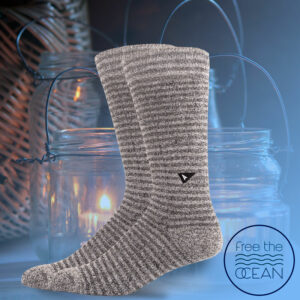
Sometimes you have no choice but to use the car, but if there are options, walking and cycling are the best. Public transport is an excellent choice if the distance is too great for a bicycle.
If you take coffee on the go, opt for a cup you brought with you. Skip drinking coffee or tea from disposable cups at work, use an old-fashioned ceramic or glass cup instead. If necessary, you can bring one from home.
Related: Can Technological Innovations Combat Climate Change?
Travel
Transport
Going on holiday by bike or even by car is far better than flying. Depending on the distance and the accessibility, train and bus are great options as well. Appreciate the beauty of a landscape that is in your neighborhood.
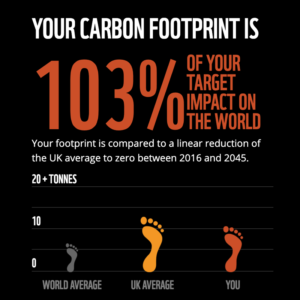
Destination
You can enjoy long weekends away quite as much if you are close by as if you were flying back and forth across Europe or the United States every month.
Our ecological footprint
It goes without saying that companies and governments need to change. So far, the suggested improvements are just words and there’s little action. But we as consumers can also do a lot. We are not helpless.
Have you tried the footprint calculator? What is your outcome? Tell us in the comment box below.

